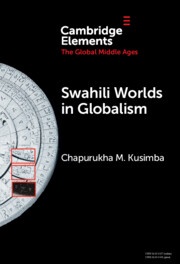Element contents
Swahili Worlds in Globalism
Published online by Cambridge University Press: 31 December 2023
Summary
- Type
- Element
- Information
- Online ISBN: 9781009072922Publisher: Cambridge University PressPrint publication: 18 January 2024
References
- 1
- Cited by



